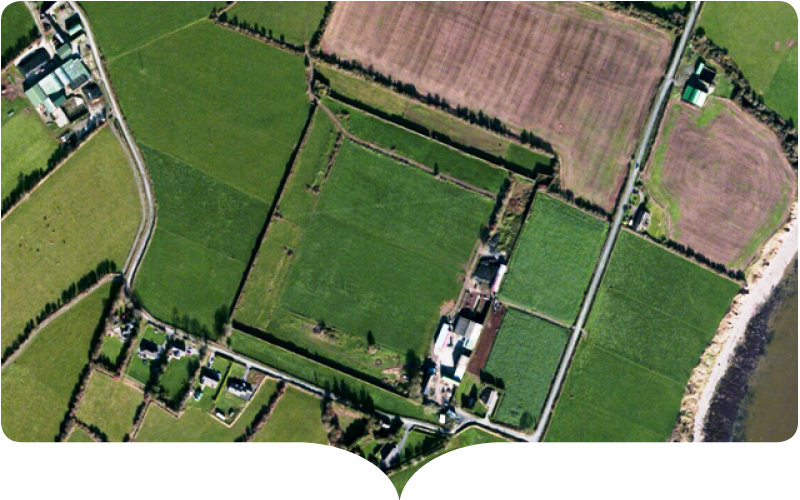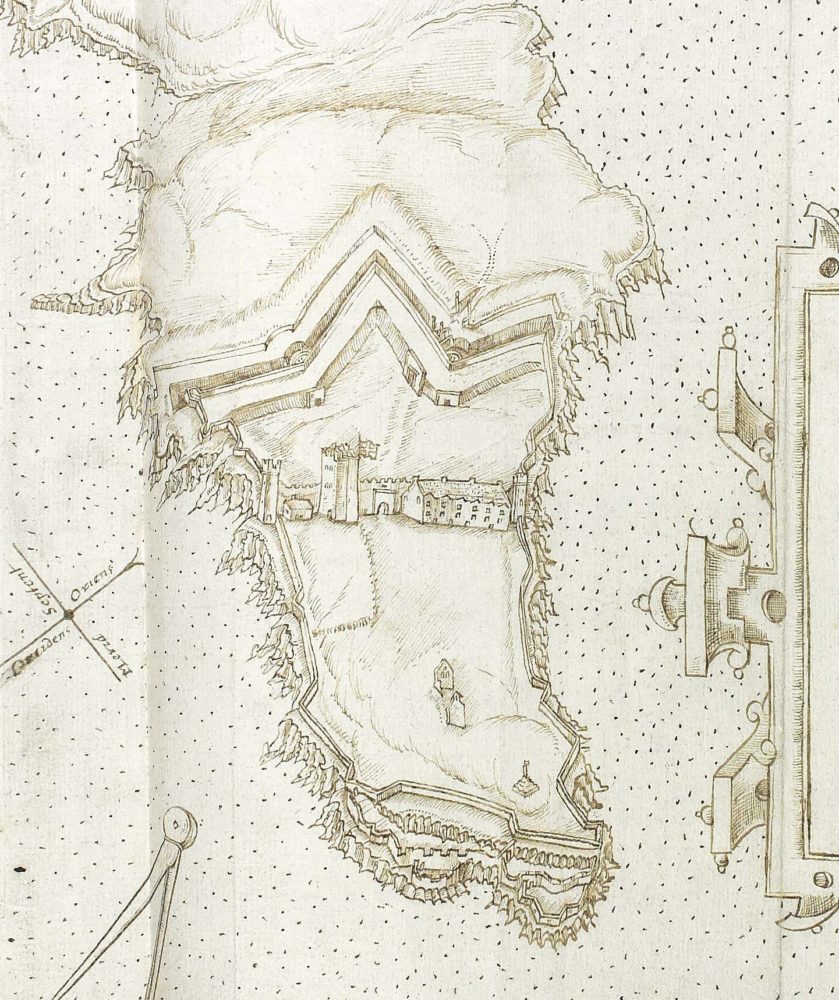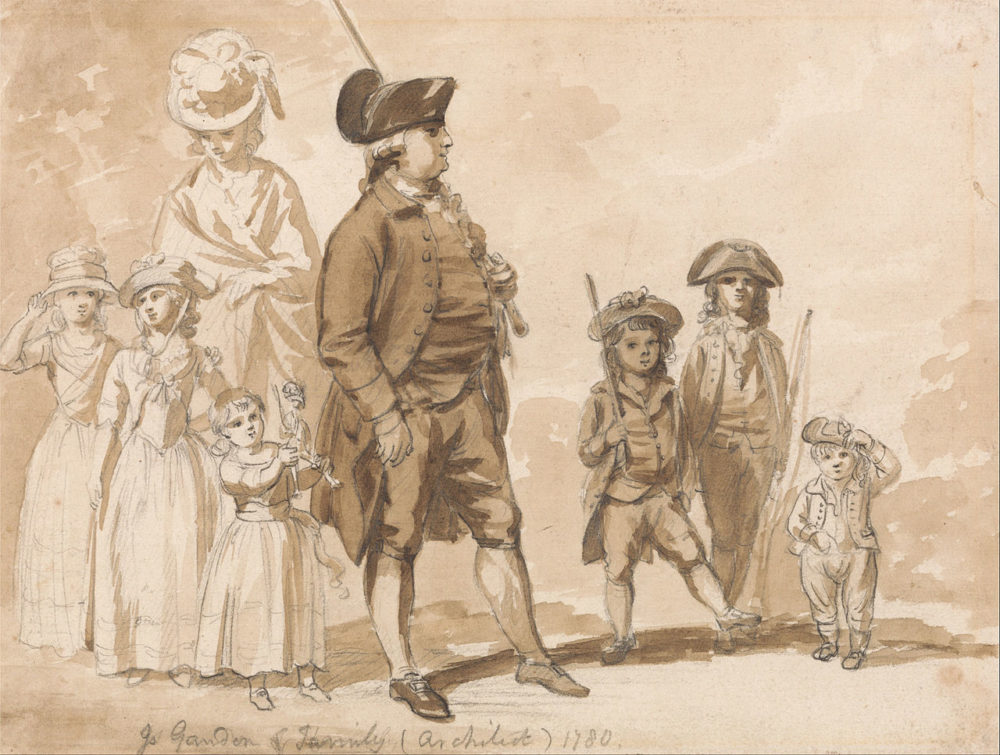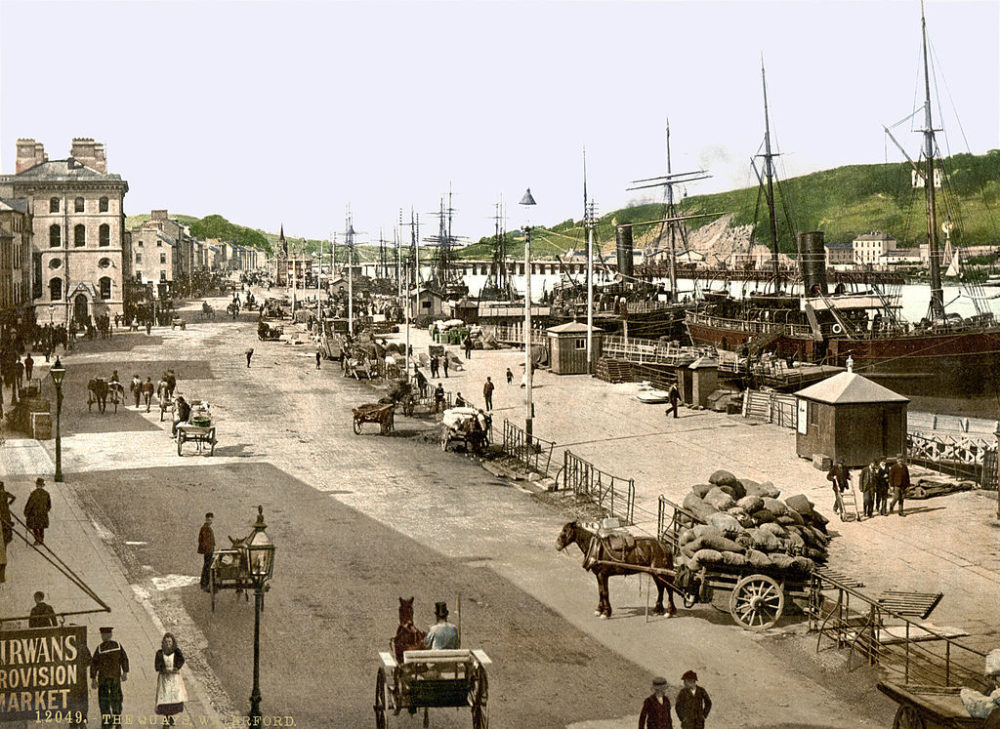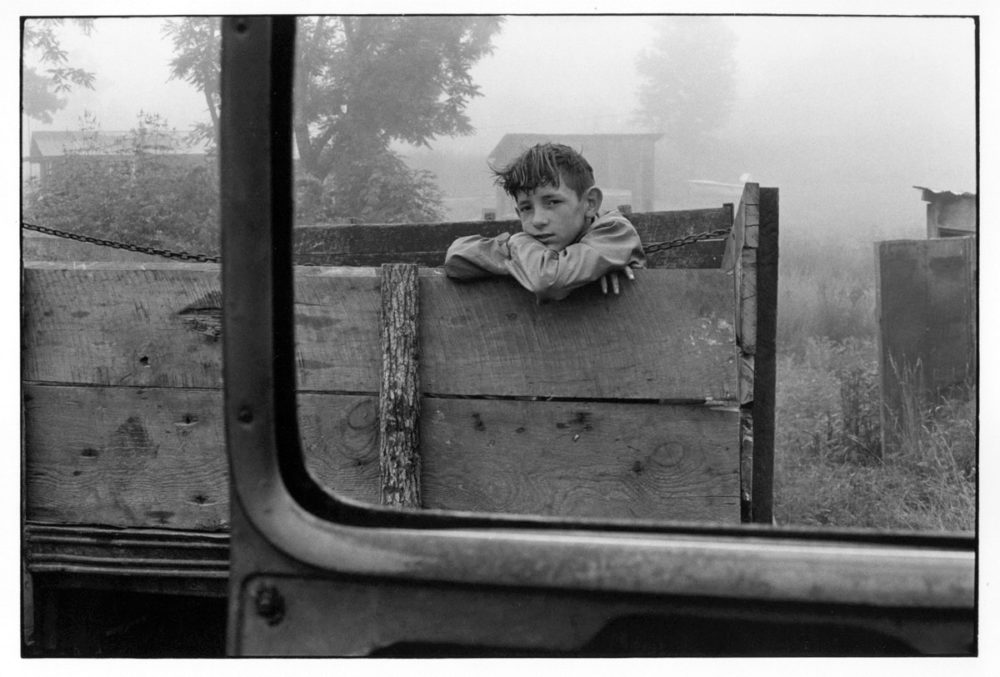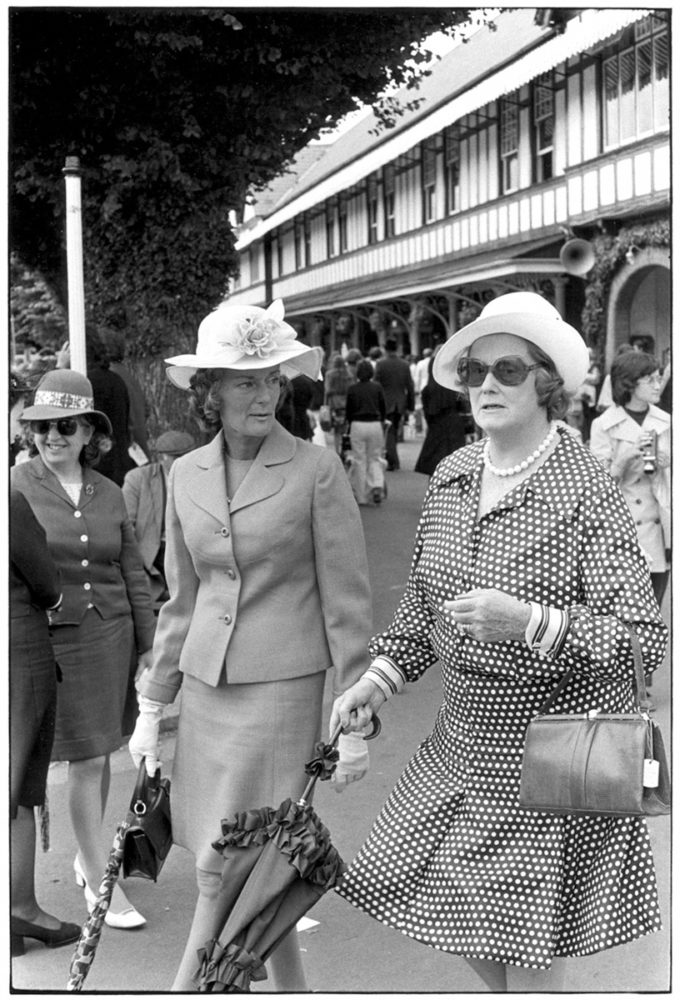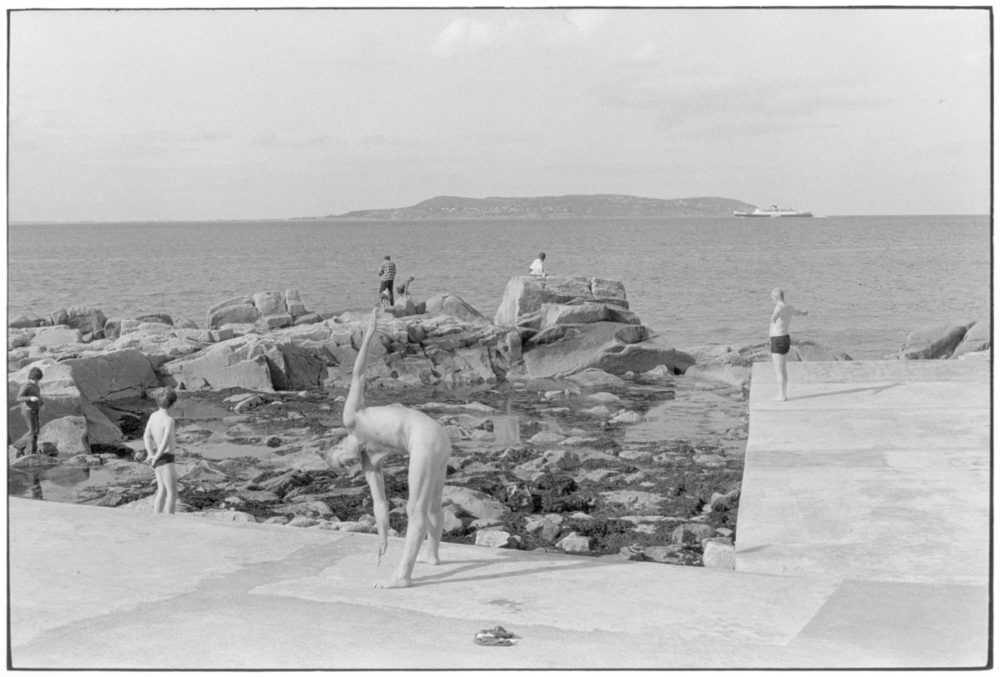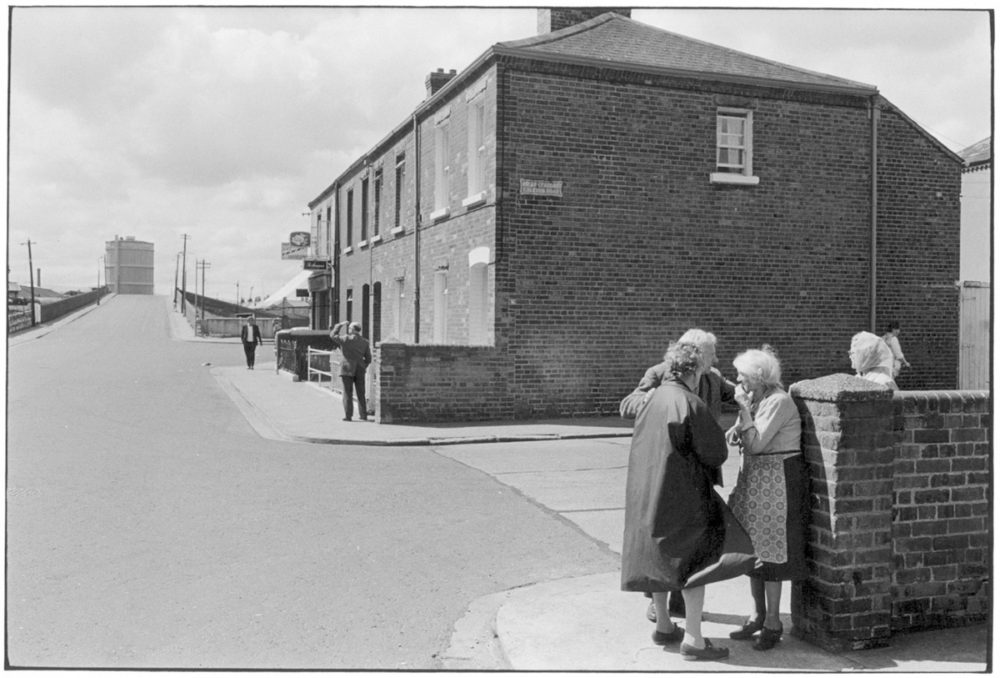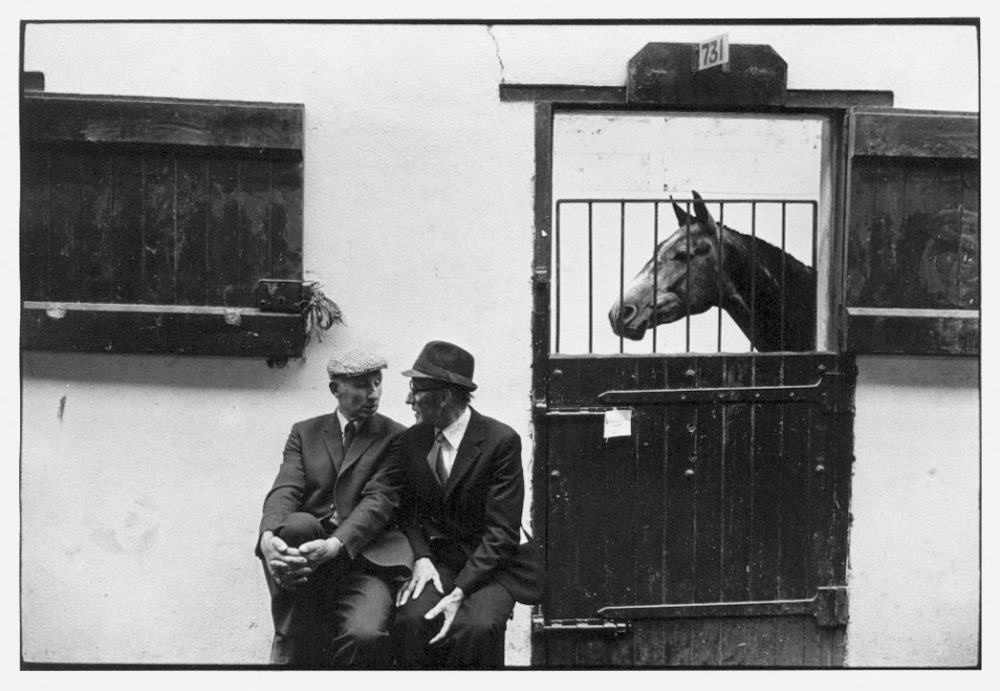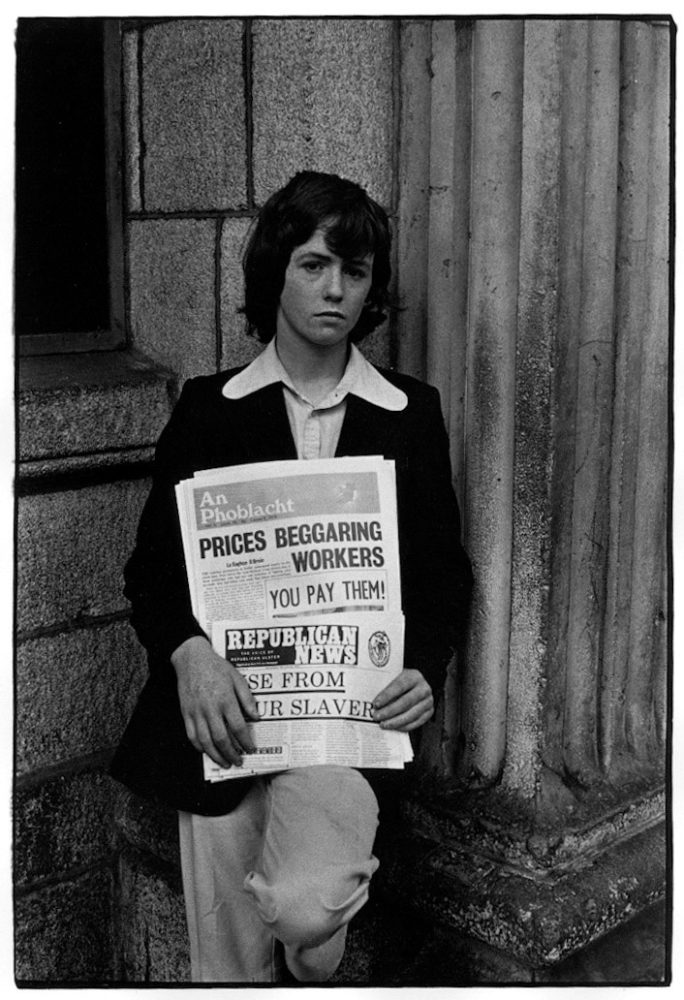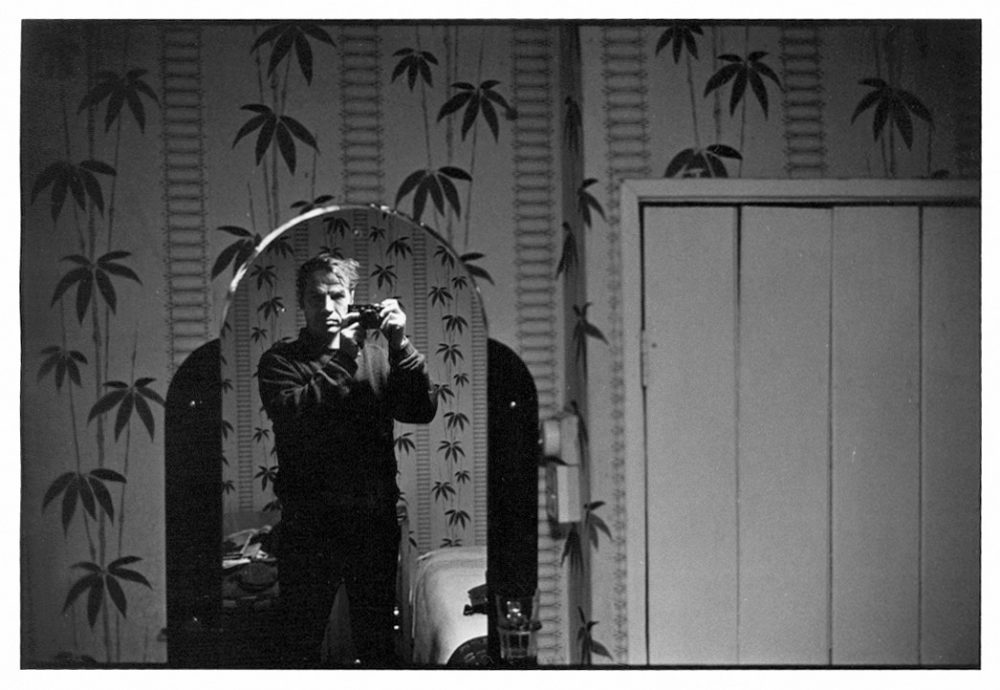
Michel Lablais is a French artist, born in Paris in 1925, and now embarking on his tenth decade. He recalls visiting the French Colonial Exhibition of 1930, with its colourful displays of life in Indochina, miniature model of Angkor Wat and pictures of aspara undulating on old stone. The aspara are female Khmer dancers, akin to the Greek muses: threshold figures, devas, angels. The exoticism of it all appealed to the five-year-old child. The world of colonialism has grown sepia as its time has passed: pith helmets, Cochin China, the velleities of Marguerite Duras: revisionism and apologies. Plus ça change… The French-Vietnamese war has been occluded by the louder American one. But something was sparked in the imaginative child that he carried into the decades of work that followed, and that remains alive in Michel Lablais, the ninety-year-old artist. Perhaps it is the mix of exoticism, exploitation, the lure of strangeness.
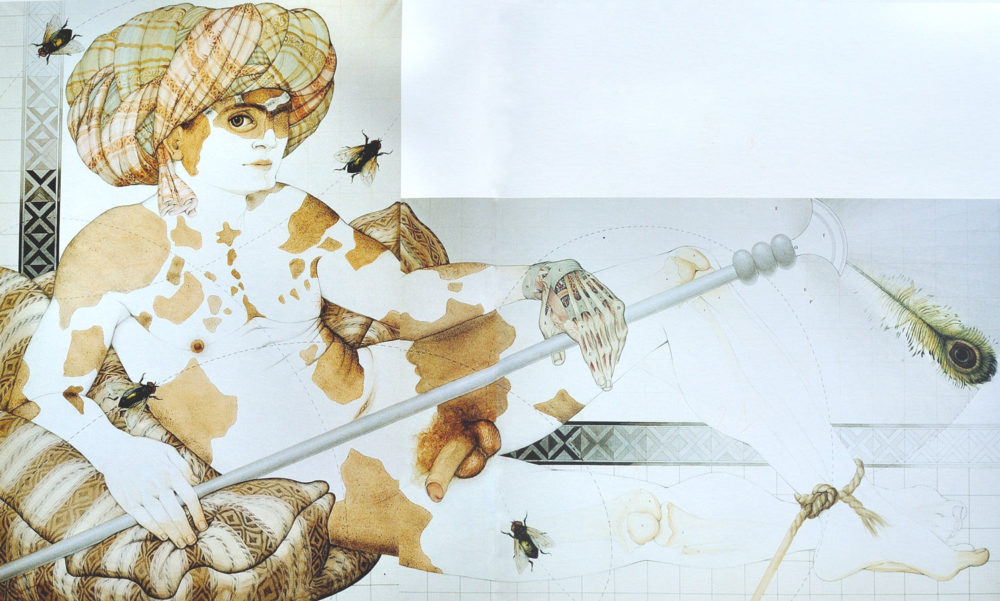
Odalisque-homme, by Michel Lablais, 1987
From the age of six or seven he developed an interest in drawing, and delighted in Christmas and birthday presents of paints, paintbrushes and sketchpads. Lablais’ work still shows a childlike fascination with the accoutrements of art: paint-loaded brushes, vintage paper, copybook handwriting all recur, faithfully rendered. The calligraphy incorporated is often that of the école primaire, neatly comme il faut. He likes an unfinished canvas, the skeleton behind the flesh: the peacock’s feather, the marauding fly and the penis are all on a par, observed as nature morte, as in the Odalisque-homme above, alluding to Ingres but also to a whole school of French orientalism.
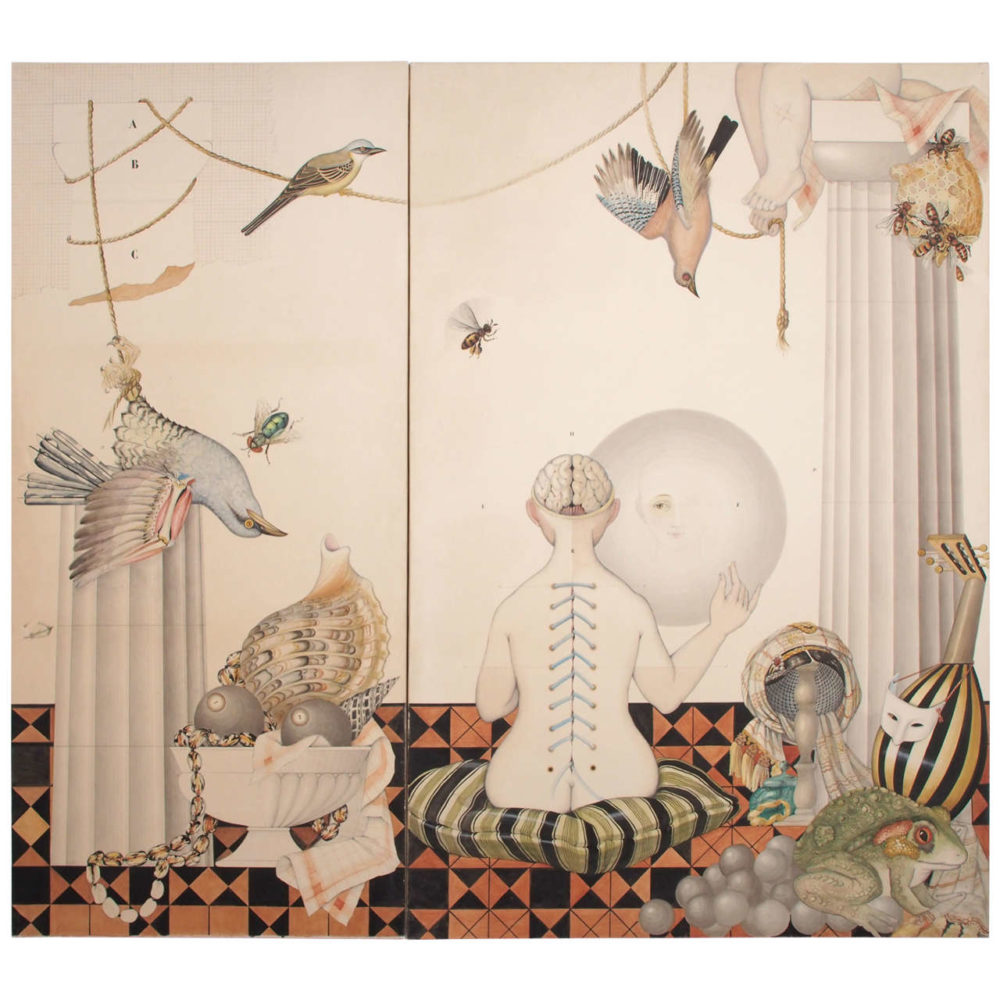
Monumental diptych by Michel Lablais, 1985
Lablais was born in Paris’s 17th arrondissement, into a bourgeois family. His father was a business director (directeur commercial) and mother a stay-at-home housewife. Both parents were quite elderly and their only child attended the Collège Chaptal, now the Lycée Chaptal in the 8th arrondissement, where he discovered an aptitude for drawing in its august classrooms filled with busts and bas-relièfs.
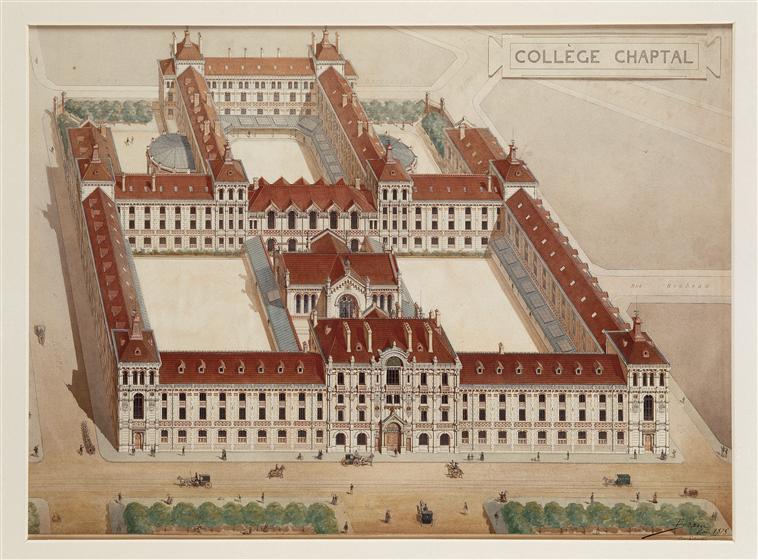
Le Collège Chaptal, drawing by Eugène Train, 1875 (Musée d’Orsay)
His career was decided at fifteen, at the beginning of the Second World War, when he spotted a poster for art college. He spent three years studying applied arts before entering the Compagnie de Topographie, one of those self-important French institutions propping up the work of empire, when France was mapping its territories in Indochina. At nineteen he signed up to go to the Far East and got permission from his father to spend three years with the army in lieu of military service. It was the time of the French-Vietnamese War.
We might laugh at the sight of an artist in uniform – but there’s nothing remotely military about Michel Lablais. He has a fondness for white linen, espadrilles, and an early photo shows him resplendant in Maghreb pantaloons. In the army he was an artiste-peintre hired to paint murals, to decorate walls and from time to time do guard duty. His anecdotes, recalled a lifetime later, have a kind of French Dad’s Army tone – the foibles of the officer class and their pretensions. Colonial duffers. Generals like big boy scouts.
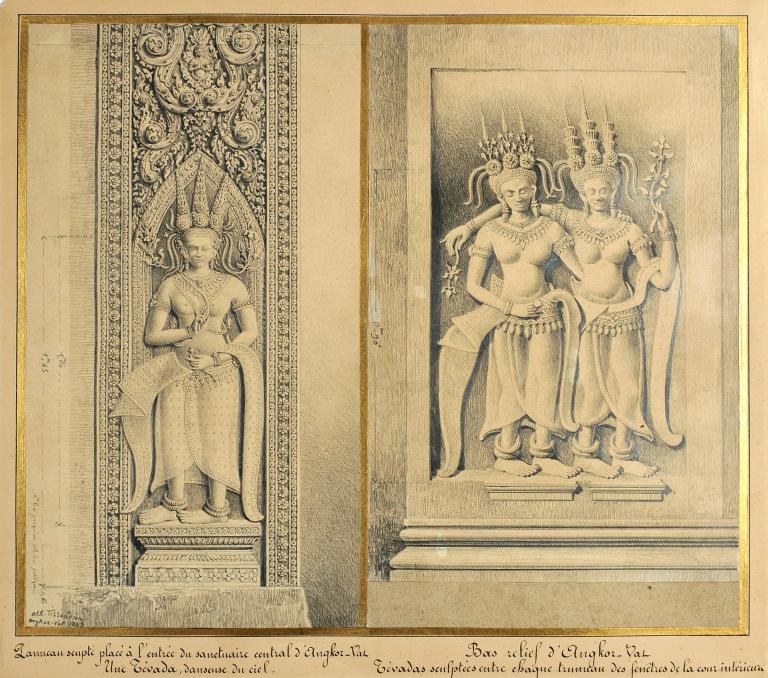
Drawing of Angkor Wat by Albert-Charles TISSANDIER (1839 – 1906), 1893
He spent several months at Angkor Wat in Cambodia, at a time when one made one’s way there through jungle on horseback and there were few tourists. It was an extraordinary sight, he recalls: the monkeys, parrots, the lush impenetrability, the mystery of the grand architectural project. Many of Lablais’ paintings look at plant and animal life with wide-eyed wonder, using the limpid colours of the topographical sketch, employing ethnographic exactness. It’s as though he’s mapping the flora and fauna of his own imagination, grabbing what he can from the world as he sees it.
His motifs are consistent, deployed over many decades, seeing out the artistic fashions of the day. He has a fascination with the primitive under the veneer of civilization, an obsession with the enigmatically smiling child, a child-like view of objects, plant life, bird life, reproduction of all sorts. He likes to use collage, assemblage and trompe l’oeil, to incorporate objects in his paintings, to deploy visual and verbal playfulness. His work is saved from illustration by surreal wit, the documentary satisfactions of the natural scientist allied to the dreamer.

Carnets des nouvelles Hébrides, by Michel Lablais, 1950-51
He followed Indochina with four years in New Caledonia (1949-1954), a French dependency, and the New Hebrides (now Vanatu), with occasional forays to Tahiti. Lablais’ eye has always sought out the exotic, and in this he follows the tradition of the artist-explorers, especially the nineteenth century orientalists and mapmakers. He has lived long enough for the names of the countries to have changed, their masters too. What was remote and wild – the Doms and the Toms (Départements and Territoires d’Outre-Mer) have become tamed. In mid-twentieth century it took two months to get to New Caledonia, one of the remotest places on earth.
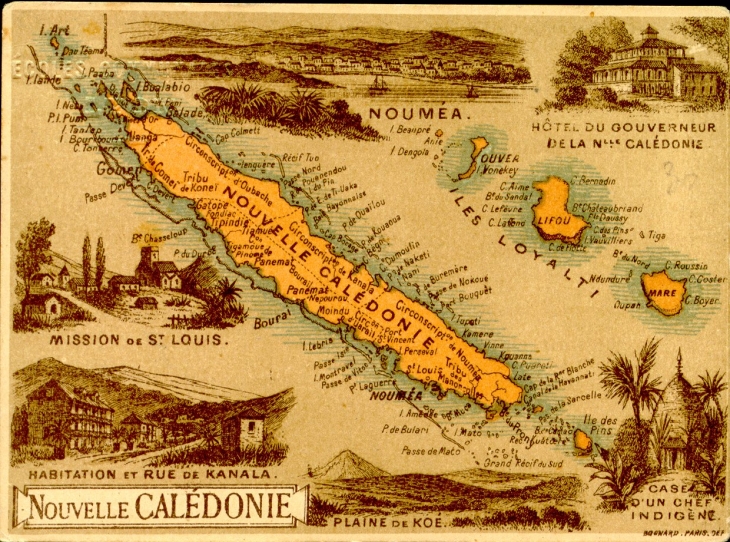
Map of Nouvelle Caledonie, 1862
“The attraction,” says Michel Lablais, “is that people lived the opposite to us. I was interested in the dances and ceremonies, the rituals of primitive tribes, their cannibalism.” He filmed their rituals, a film now archived in the Musée de l’Homme in Paris. “They wrapped their penises in straw, in rattan. The women would weave these “cache sexe” for the men.
He had always liked the work of the financier turned artist Gauguin, and visited his tomb in Tahiti. The island reminded him so much of Gauguin’s paintings: their vibrant colours, rose petals scattered underfoot, the flat totemic shapes of the Polynesian faces. He encountered old women who remembered Gauguin, who had been given paintings by the artist, which they had used for target practice and long destroyed. Tahiti was a magnet for drop-outs from civilisation and refugees of all sorts. He remembers a man sitting cross-legged on the deck of a ship, a lawyer from Paris, who had given it all up to become a tramp.
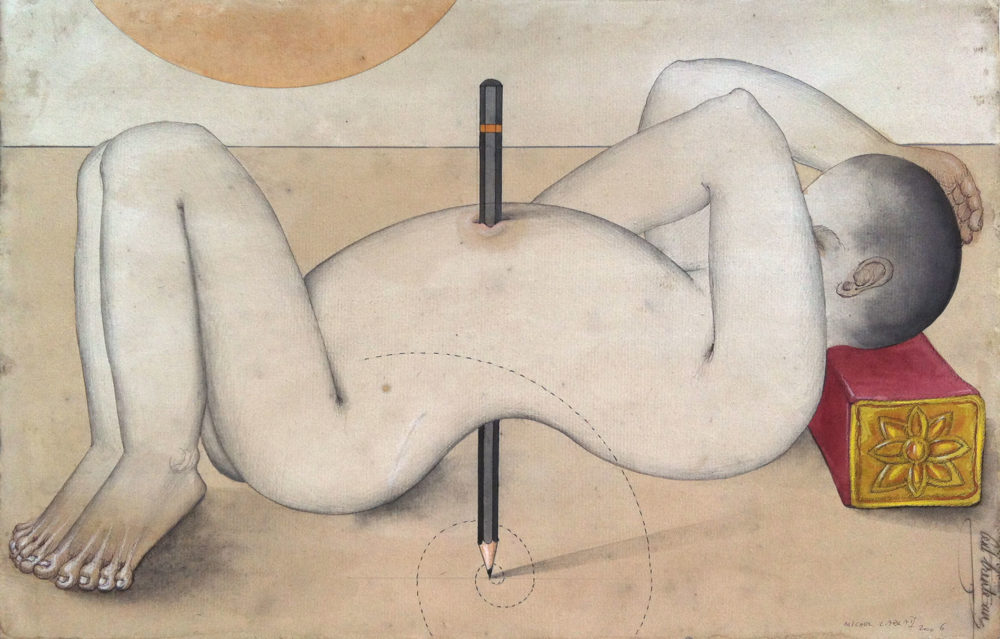
Crayon-Poignard by Michel Lablais, 2006
Lablais returned to Paris in 1954, back to civilization. He illustrated an article in Realités (October 1954) on the Amok tribe in New Caledonia. He tells stories of cannibalism, of the taste of human flesh, with a shocking relish, enjoying the taboo breaking. His paintings, too, are much concerned with taboo, the edge of experience, with the animalistic cruelty of humans, observed dispassionately. His work has always aspired to whimsical exactitude, closer to illustration than to paint. Motifs recur: the tea towel of traditional red or blue pattern, tile work, masks of all sorts, the severed or detached limbs based on anatomical drawings, the erotics of vegetables and fruits – particularly the radish with its rose madder colouring. He often embodies a jeu d’esprit, and has worked with writers and poets.
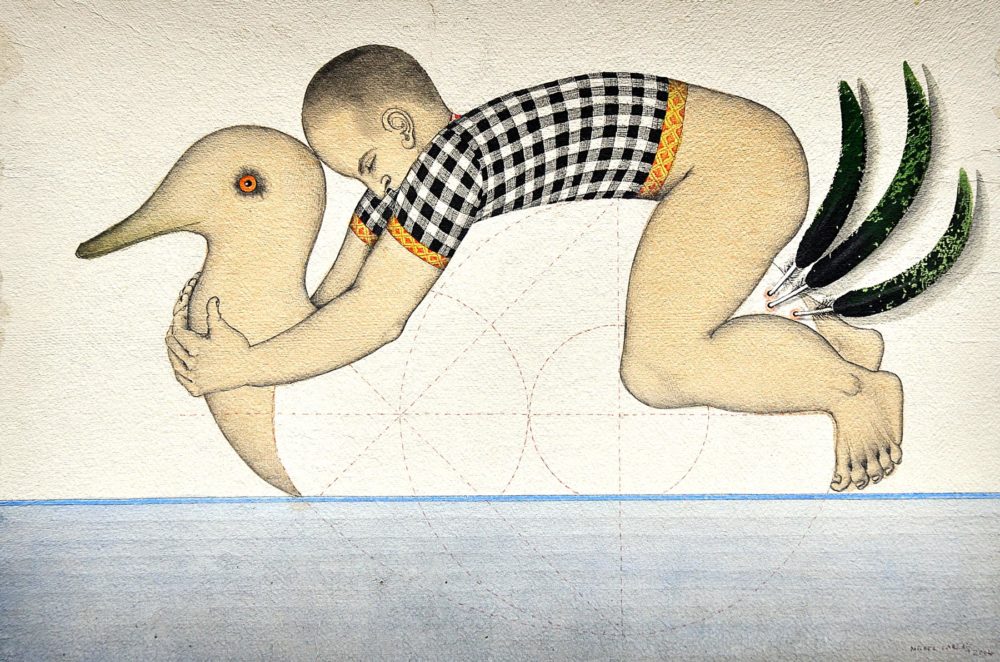
Enfant-Canard by Michel Lablais, 2004
Lablais has found himself in his work and at ninety is still painting at a phenomenal rate. His painter friends, particularly the collector Daniel Cordier, bought much of it, now in the Beaubourg collection. He has exhibited in MOMA in New York, in the Museum of Modern Art in Paris, and in many galleries around the world.
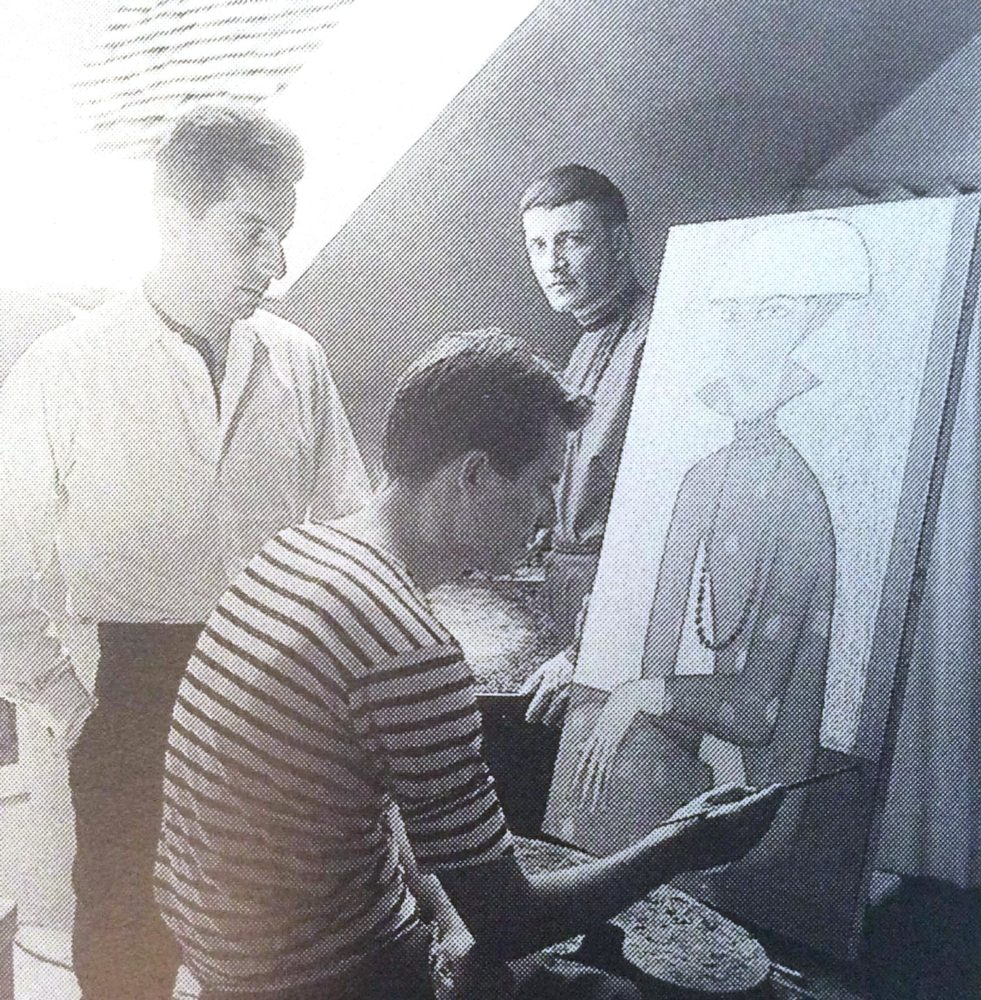
Horst-Egon Kalinowski and Michel Lablais (seated), date unknown
In Paris he met the German artist Horst-Egon Kalinowski, a sculptor. Kalinovski had been a prisoner of war in France and at first people said they wouldn’t get on, but they clearly hit it off. The relationship flourished for sixty years. They kept a studio in Paris and a loft in New York, where both exhibited. The couple spent part of every year in Hollywood, in Palm Springs. Kalinowski died in 2013.
Besides Gauguin, Michel Lablais has an enthusiastic liking for Japanese art, Hokusai in particular, but also the Elizabethans – ruffs keep reappearing in his work – the anatomical plates of the 18c graphic artist Jacques Fabien Gauthier d’Agotie. He also has an affinity for the Douanier Rousseau, especially his jungles, for Max Ernst, Paul Klee, René Magritte and the Flemish Primitives. He doesn’t quite see the point of the Impressionists. “I’d much prefer look at some anatomical plate than at a sunset.”
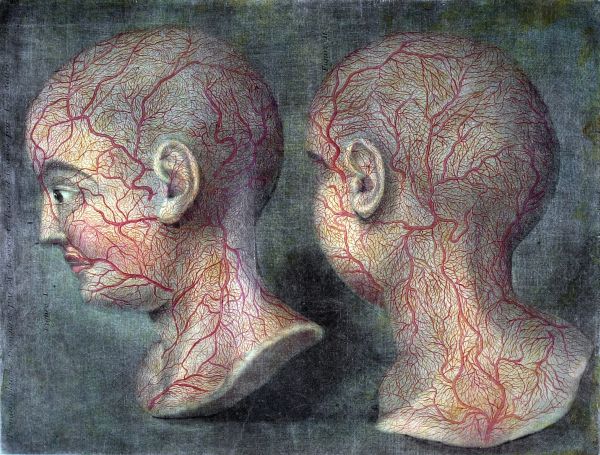
Drawing by Jacques Fabien Gautier d’Agoty
I ask him why the child figure reappears in his work: “It’s a figure, neither child nor man, maybe myself. You know, I’m not very adult. I’ve never voted. I have no interest in politics or in public affairs really. People keep asking me about the figure of the child, women especially. ‘Do you like children?’ they ask. I don’t really. Children aggravate me sometimes, but not especially so. What I like is anatomy. When I was a child I asked my mother for the head of a rabbit because I wanted to draw the severed head. I found that beautiful. Some people don’t like my work, but there you go. Take it or leave it. I was curious. For me the skinned body of an old anatomical plate is beautiful. I’ll leave the sunsets to the Impressionists. In Indochina a surgeon asked me if I wanted to watch his operations. Sure, I said. Why not? I found it fascinating, surprising, but hardly frightening.”
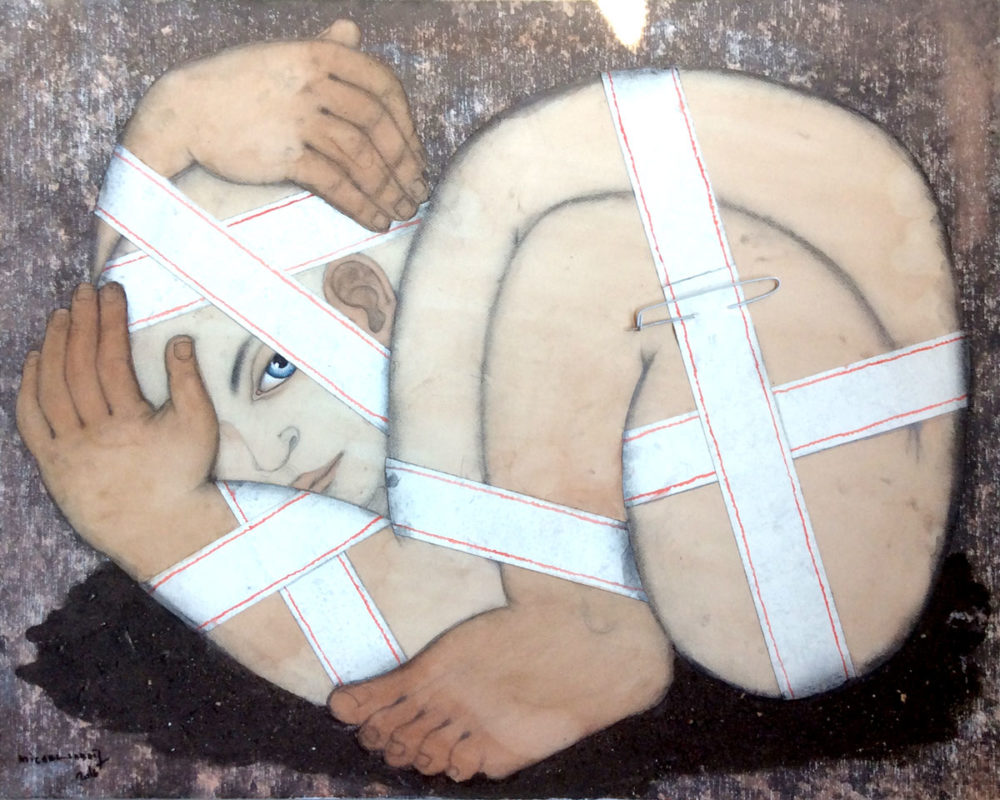
Bandelettes, by Michel Lablais, 2016
I ask him about the drawing paper he likes to use, sometimes appearing to be recycled map paper, the crimps and folds still visible. “I like old paper, the feel of it, it has a life, a patina. It seems more alive. There’s a certain pleasure in drawing a carrot. I’m not looking to make pretty (‘a faire joli’), to please. Carrots, onions, radishes. I like the colour and form of a radish. Once we had a show opening, a vernissage, in Paris and we served nothing but radishes… radishes with butter…”
Michel Lablais’s official website is here.
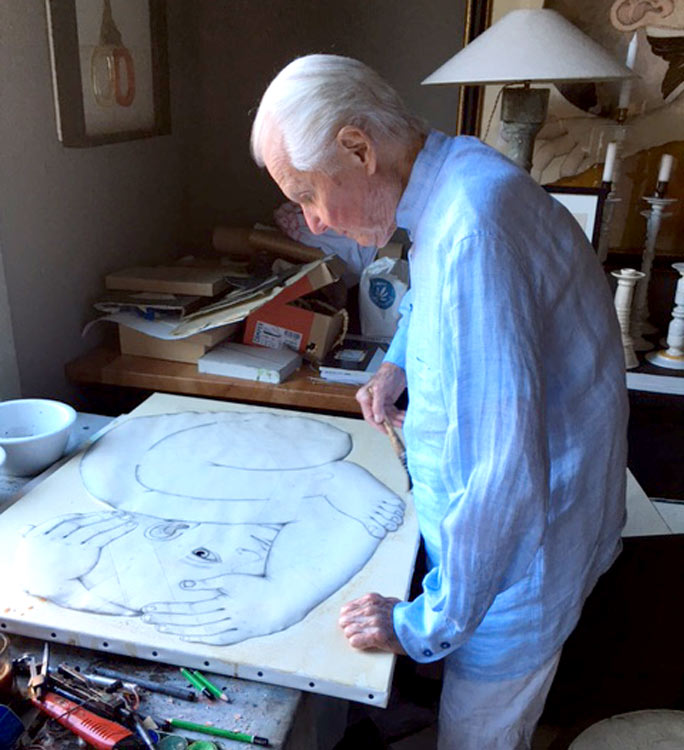
Michel Lablais at work in his studio in Marseillan, 2017


